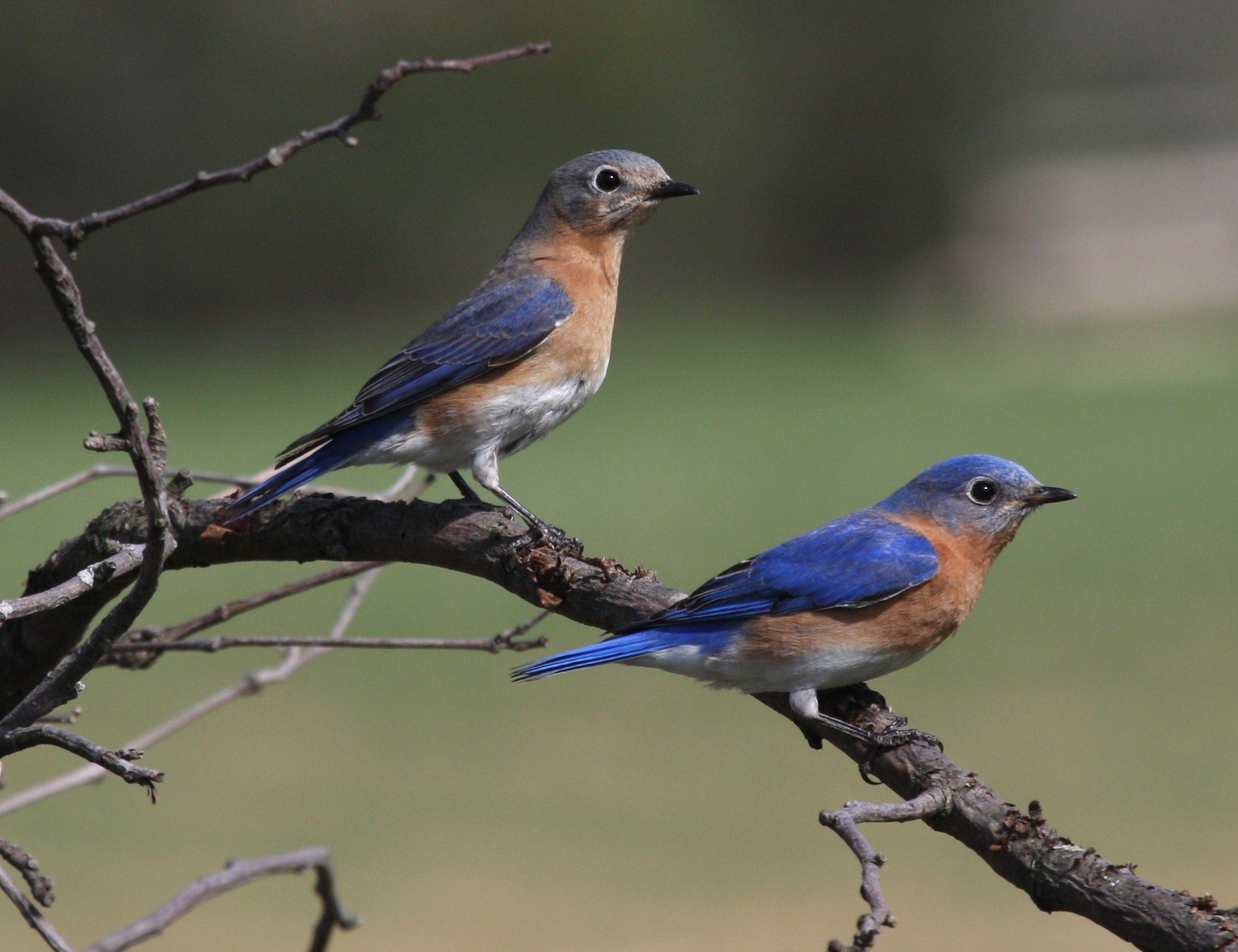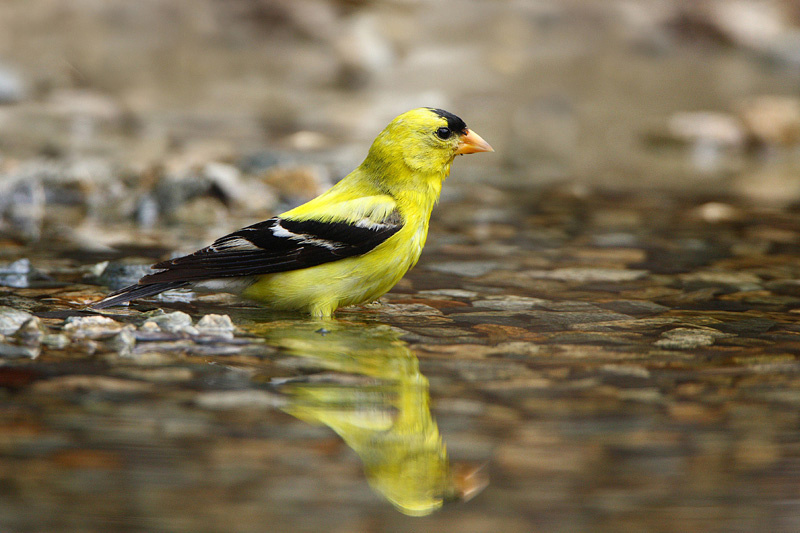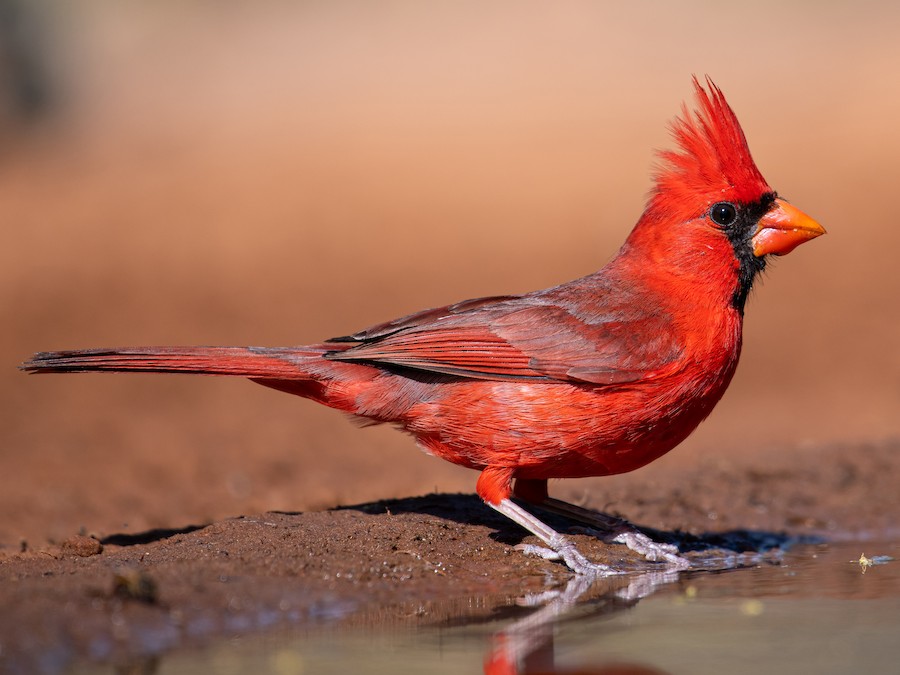New York City is a bustling metropolis that is home to a diverse range of bird species. With over 350 species of birds throughout the year, the city is a haven for birdwatchers and nature enthusiasts alike. From the American Robin to the Northern Cardinal, there are plenty of birds to see in New York City.
In this article, we will explore some of the most common birds to see in the city, where to find them, and what makes them unique. Whether you’re a seasoned birder or a beginner, there’s something for everyone in the Big Apple’s birding scene.
You are reading: 10 Types Of Birds To See In New York City

10 Types Of Birds To See In New York City
American Robin

The American Robin is a common bird species found in New York City. This bird is easily recognizable by its orange breast and gray-brown back.
The American Robin is the first sign of spring for many in northern North America. It is an abundant species and can be seen in almost any urban area of Manhattan. The male American Robin has a dark gray back and head with a red belly, while the female has a similar appearance but with a paler belly.
The American Robin is known for building nests in trees, on ledges, and even on man-made structures such as buildings and streetlights.
Northern Cardinal

The Northern Cardinal (Cardinalis cardinalis) is a bird species in the genus Cardinalis and is commonly found in New York City. This bird is known for its striking red plumage, which is more prominent in males than females. The male Northern Cardinal has a vibrant red color with a black mask on the face and a larger crest, while the female has a reddish-olive color with a gray mask around the beak.
The Northern Cardinal is a mid-sized perching songbird with a body length of 21-23 cm (8.3-9.1 in) and a crest on the top of the head. This bird is a year-round resident of New York City and is commonly found in backyards, parks, and woodland areas.
The Northern Cardinal is a territorial songbird, and the male sings in a loud, clear whistle from the top of a tree or another high location to defend his territory. This bird is also a frequent visitor to bird feeders and can be attracted by sunflower seeds.
Blue Jay
Read more : Bees Are Taking Over My Hummingbird Feeder
The Blue Jay (Cyanocitta cristata) is a mid-sized songbird that is native to eastern North America. This bird is known for its striking blue plumage on the back and wings, a black ring that outlines its head, and a conspicuous blue crest that it sticks up while expressing bouts of emotions with its wide variety of loud, boisterous calls that carry long distances.
The Blue Jay is a year-round resident of New York City and can be observed in all five boroughs, especially where taller trees are present. This bird is common in residential areas, parks, and woodlands.
The Blue Jay is known for its intelligence and is one of the few bird species known to use tools. They are also known to mimic the calls of other birds and animals. In New York City, Blue Jays breed in Prospect Park and across all five boroughs.
Rock Pigeon
The Rock Pigeon (Columba livia) is a bird species that is almost exclusively seen in New York City. This stout bird has a small head, short neck, and thick gray and white plumage.
The Rock Pigeon is also known as the common city pigeon and is a year-round resident of New York City. They are commonly found in parks, on buildings, and on city streets.
The Rock Pigeon is a favorite prey of the Peregrine Falcon, which can be seen in New York City. The Rock Pigeon is often considered a nuisance in cities, but it has not been proven to have much negative impact on native bird species.
The Rock Pigeon is known for its adaptability and can sustain itself in the wild around cities, farms, cliffs, and bridges. The Rock Pigeon is also a favorite among pigeon fanciers and racers, and the tradition of urban pigeon keeping has a longstanding history in New York City.
Mourning Dove
The Mourning Dove (Zenaida macroura) is a bird species that is commonly found in New York City. This bird is also known as the American mourning dove, the rain dove, and colloquially as the turtle dove.
The Mourning Dove is a medium-sized bird with a slender tail, small head, and a grayish-brown body with black spots on its wings and a black spot under its eye.
The Mourning Dove is a year-round resident of New York City and is commonly found in backyards, parks, and woodland areas. This bird is known for its soft, drawn-out calls that sound like laments.
The Mourning Dove feeds on the ground for seeds and swallows fine gravel to help it digest hard seeds. It is also a frequent visitor to bird feeders. The Mourning Dove is the most frequently hunted species in North America, with more than 20 million birds shot annually in the U.S. for sport and meat.
Read more : Budgie Died With Eyes Open
The Mourning Dove is known for its adaptability and is found in a wide variety of habitats, including open woodlands, forest edges, grasslands, fields, agricultural, and suburban areas.
Red-tailed Hawk
The Red-tailed Hawk (Buteo jamaicensis) is a bird of prey that breeds throughout most of North America, from the interior of Alaska and northern Canada to as far south as Panama and the West Indies. Here are some interesting facts about the Red-tailed Hawk:
– The Red-tailed Hawk is one of the most common members within the genus of Buteo in North America or worldwide.
– The Red-tailed Hawk is one of the largest members of the genus Buteo, typically weighing from 690 to 1,600 g (1.5 to 3.5 lb) and measuring 45–65 cm (18–26 in) in length, with a wingspan from 110–141 cm (3 ft 7 in – 4 ft 8 in).
– The Red-tailed Hawk is a year-round resident of New York City and can be observed in all five boroughs, especially where taller trees are present.
– The Red-tailed Hawk is known for its broad, rounded wings and a short, wide tail. The bird is sometimes also referred to as the red-tail for short, when the meaning is clear in context.
– The Red-tailed Hawk occupies a wide range of habitats and altitudes, including deserts, grasslands, coniferous and deciduous forests, agricultural fields, and urban areas.
– The Red-tailed Hawk is a top predator and feeds on small mammals, reptiles, and birds. They hunt from perches and from the air, and can spot a mouse from 100 feet (30 meters) up in the air.
– The Red-tailed Hawk has a thrilling, raspy scream that sounds exactly like a raptor should sound.
American Goldfinch
The American Goldfinch (Spinus tristis) is a small North American bird in the finch family. Here are some interesting facts about the American Goldfinch:
Identification:
– The American Goldfinch is a small finch with a short, conical bill and a small head, long wings, and short, notched tail.
– Adult males in spring and summer are bright yellow with black wings with white stripes, a black cap on its head, and a white rump.
– Females and winter males have duller feathers that are an olive-brown color with black wings and two white wingbars.
Habitat and Range:
– The American Goldfinch is migratory, ranging from mid-Alberta to North Carolina during the breeding season, and from just south of the Canada–United States border to Mexico during the winter.
– The American Goldfinch is usually easy to find throughout much of North America, except in deep forests.
– The American Goldfinch is most abundant in areas with thistle plants, and near feeders.
Behavior and Diet:
– The American Goldfinch feeds primarily on sunflower and nyjer seeds.
– The American Goldfinch is unusual among goldfinches in molting their body feathers twice a year, once in late winter and again in late summer.
– The American Goldfinch breeds later than most North American birds, waiting to nest until June.
Conservation Status:
– The American Goldfinch is widespread and very common, although possibly has declined recently in some areas.
– The American Goldfinch is not considered threatened or endangered.
Scarlet Tanager
The Scarlet Tanager (Piranga olivacea) is a medium-sized American songbird that is native to eastern North America. Here are some interesting facts about the Scarlet Tanager:
Identification:
– The male Scarlet Tanager is a striking bird with a bright red body, jet-black wings, and tail.
– The female Scarlet Tanager is yellowish-green on the back and wings, with a yellowish breast and belly.
– Scarlet Tanagers are medium-sized songbirds with fairly stocky proportions. They have thick, rounded bills suitable both for catching insects and eating fruit.
Habitat and Range:
– The Scarlet Tanager is a summer resident of New York City and is commonly found in deciduous forests.
– During late summer and fall migration, Scarlet Tanagers often join mixed flocks of other songbirds to feed.
– The Scarlet Tanager spends winters in northwestern South America, foraging alongside a host of exotic tropical birds in tall trees in mountain forests ranging from Panama south to Bolivia.
Behavior and Diet:
– The Scarlet Tanager feeds on insects, spiders, and fruit.
– The male Scarlet Tanager has a distinctive, raspy song that sounds like “chick-burr”.
– The female Scarlet Tanager sings a song similar to the male’s, but softer, shorter, and less harsh.
Conservation Status:
– The Scarlet Tanager is not considered threatened or endangered.
– The Scarlet Tanager is present in Missouri from mid-April to mid-October, with numbers peaking in mid-May and again in mid-September.
Eastern Bluebird
The Eastern Bluebird (Sialia sialis) is a small North American migratory thrush found in open woodlands, farmlands, and orchards. Here are some interesting facts about the Eastern Bluebird:
Identification:
– The male Eastern Bluebird is a brilliant royal blue on the back and head, and warm red-brown on the breast.
– The female Eastern Bluebird is grayish-blue on the back and wings, with a rusty throat and breast, and a white belly.
– Eastern Bluebirds are small birds with short, slender beaks and short legs.
Habitat and Range:
– Eastern Bluebirds are found throughout eastern North America, from southern Canada to the Gulf of Mexico.
– Eastern Bluebirds are a common sight in open country with patchy vegetation and large trees or nest boxes.
– Eastern Bluebirds are cavity nesters and will readily use nest boxes.
Behavior and Diet:
– The male Eastern Bluebird displays at his nest cavity to attract a female. He brings nest material to the hole, goes in and out, and waves his wings while perched above it. Only the female Eastern Bluebird builds the nest and incubates the eggs.
– Eastern Bluebirds eat mostly insects, wild fruit, and berries.
– Eastern Bluebirds are a favorite of birders due to the bright-blue breeding plumage of the male, which is easily observed on a wire or open perch.
Conservation Status:
– The Eastern Bluebird is not considered threatened or endangered.
– The Eastern Bluebird is the state bird of both Missouri and New York.
Downy Woodpecker
The Downy Woodpecker (Dryobates pubescens) is the smallest woodpecker species in North America, measuring 14 to 18 cm (5.5 to 7.1 in) in length. Here are some interesting facts about the Downy Woodpecker:
Identification:
– The Downy Woodpecker has a straight, chisel-like bill, blocky head, wide shoulders, and straight-backed posture as they lean away from tree limbs and onto their tail feathers.
– The male Downy Woodpecker has a small red patch on the back of its head, while the female does not.
– The Downy Woodpecker is black and white, with a white chest and back, black wings with white spots, a black tail, and a black head with a white “mustache” and white “eyebrows”.
Habitat and Range:
– The Downy Woodpecker primarily lives in forested areas throughout the United States and Canada, with the exception of deserts in the southwest and the northern tundra.
– Downy Woodpeckers are found in open woodlands, farmlands, and orchards.
– Downy Woodpeckers are diurnal and non-migratory.
Behavior and Diet:
– The Downy Woodpecker feeds primarily on insects, although it supplements its diet with seeds and berries.
– The Downy Woodpecker is a cavity nester and nests in tree cavities.
– The male Downy Woodpecker displays at his nest cavity to attract a female. He brings nest material to the hole, goes in and out, and waves his wings while perched above it. Only the female Downy Woodpecker builds the nest and incubates the eggs.
Conservation Status:
– The Downy Woodpecker is very common and widespread, with no evidence of population declines.
– The Downy Woodpecker is a favorite of birders due to its small size and distinctive markings.
FAQS
1. What are the most common birds to see in New York City?
Some of the most common birds to see in New York City include the American Robin, Northern Cardinal, Blue Jay, Rock Pigeon, and Mourning Dove.
2. Where can I find these birds in New York City?
These birds can be found in a variety of habitats throughout the city, including parks, woodlands, and urban areas.
3. What is the best time of year to see these birds?
Many of these birds are year-round residents of New York City, but some may be more easily seen during certain seasons. For example, the American Goldfinch is more easily seen in the summer when it molts into its bright yellow breeding plumage.
4. Can I attract these birds to my backyard?
Yes, many of these birds can be attracted to bird feeders with the appropriate food. For example, the American Goldfinch can be attracted with sunflower and nyjer seeds.
5. Are these birds endangered?
Most of these birds are not considered threatened or endangered. However, some bird species in New York City and around the world are facing population declines due to habitat loss, climate change, and other factors.
Source: https://petstutorial.com
Category: Birds










